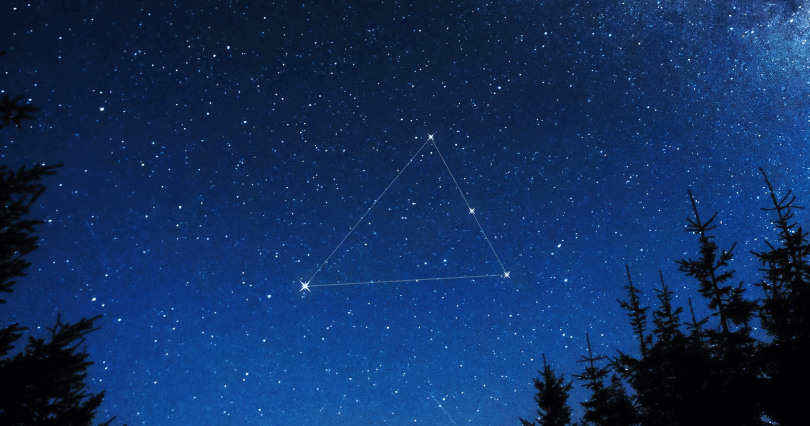Triangulum Australe Constellation

Triangulum Australe is one of the smallest, fainted constellations in the southern sky. Its name is Latin for the southern triangle. It was not known to Ptolemy but was mentioned around the 16th century and depicted by Peter Plancius in his sky maps. From there, he recognized several new southern sky constellations, including this one he referred to as "Den Zuyder Trianghel". A few years later, the constellation was renamed to the "Triangulum Australe" in the new Sky Atlas. It is named the southern triangle due to the fact its 3 brightest stars form an equilateral triangle. Constellation is bordered by Norma, Ara, Apus and Circinus constellation. This one never sets below the horizon south of the equator, and could not be seen that easily from the northern hemisphere of Europe.
How to find Triangulum Australe constellation in the night sky?
Triangulum Australe is the 83rd constellation in size, and it is set in the third quadrant of the southern hemisphere. This constellation is visible to all observers and could be seen at latitudes between +25° and -90°, but due to fact it is small and faint, it is located too south to be visible to Europe and most of the northern hemisphere. This one never sets below the horizon south of the equator.
Nearby are Apus, Ara, Norma, and Circinus constellations, and it belongs to the Hercules family of constellations along with Aquila, Ara, Centaurus, Corona Australis, Corvus, Crater, Crux, Cygnus, Hercules, Hydra, Lupus, Lyra, Ophiuchus, Sagitta, Scutum, Sextans, Serpens and Vulpecula constellations.
Major stars of Triangulum Austale constellation
Triangulum Australe constellation has only one star its known and confirmed planet. It contains no Messier objects are there aren’t any meteor showers linked to this constellation. The three brightest stars Atria, Betria, and Gatria form an equilateral triangle in this constellation. The brightest one is Atria or Alpha Trianguli Australis with magnitude 1.91. This star is about 391 light-years distant from Earth.
Mythology of the Triangulum Australe Constellation
This constellation has no connection with any Greek or Roman myth or tail in particular. Ptolemy, the famous Greek astronomer, was not able to see it, due to the fact this one never sets below the horizon south of the equator.
The first record of this constellation is from the 16th century when the Dutch fleet, under Captain Keyser, traveled to the legendary Spice Islands so the new trade relationships could be created. Under that journey, the positions of 135 stars were measured, and later on, placed in Plancius’ sky maps. From their observing, he depicted 12 new constellations that were not been recognized before, and Triangulum Australe was one of them but named Den Zuyder Trianghel.
In one of the records it was said that the astronomer Petrus Plancius, has incorrectly placed Triangulum Australis constellation to the south of other constellation - the constellation Argo Navis, which later one was divided into three smaller ones. Johann Bayer shortened the name of this constellation to its known now Triangulum Australe in his Uranometria in 1603. De Lacaille called this constellation “le Triangle Austral ou le Niveau” on his planisphere in 1756 and described it as a surveyor’s level (“niveau”), and it was one of his several constellations that represented instruments. The other two were compass Circinus and the set square Norma constellations.
Constellation is today accepted and recognized by International Astronomical Union and listed as one of their 88 modern known constellations.
Choose your package
-
Lifetime Entry in Star Catalog
-
Guaranteed visible from your location
-
Star Finder app access


-
Free & express shipping available
-
PDF Emailed in Seconds
-
Everything from a Standard Star package
-
Choose a Star Constellation
-
Easier to find in the Sky




-
Free & express shipping available
-
PDF Emailed in Seconds
-
Everything from a Standard Star package
-
Name Two Stars together
-
Extra bright and Unique 2-Star Pair






-
Free & express shipping available
-
PDF Emailed in Seconds



